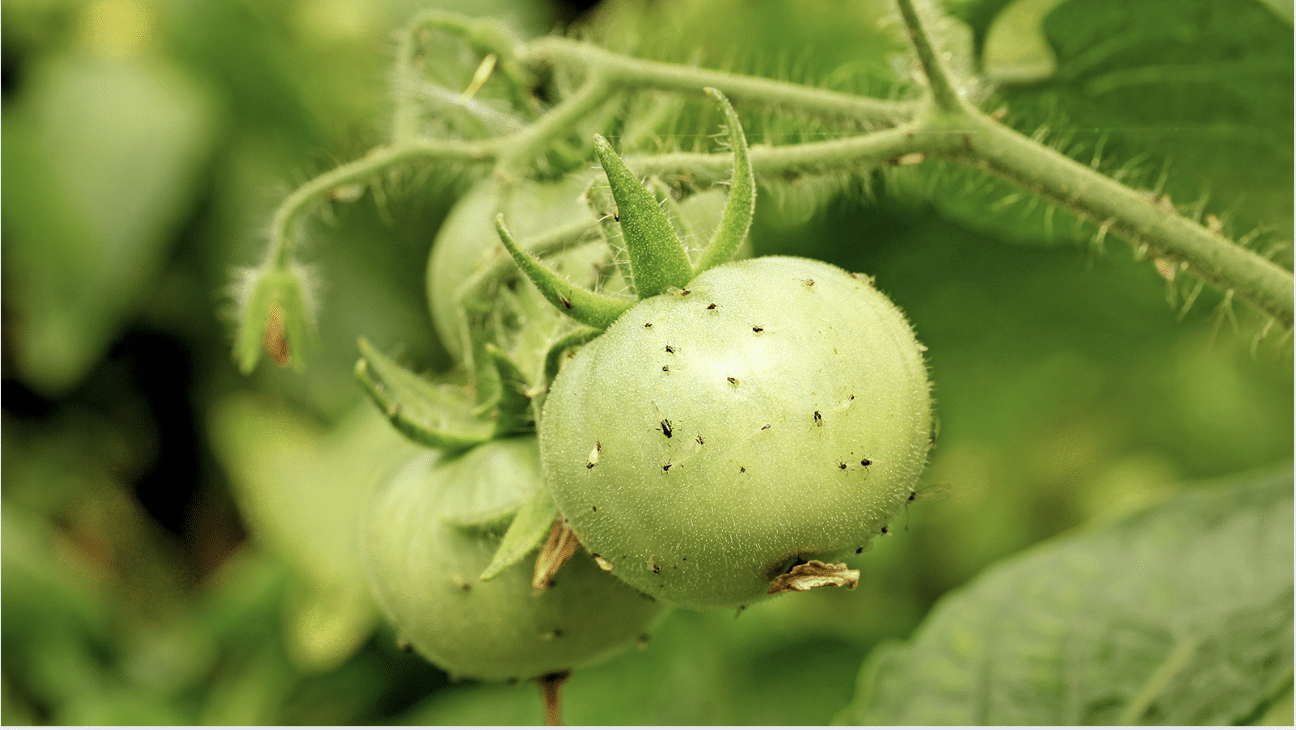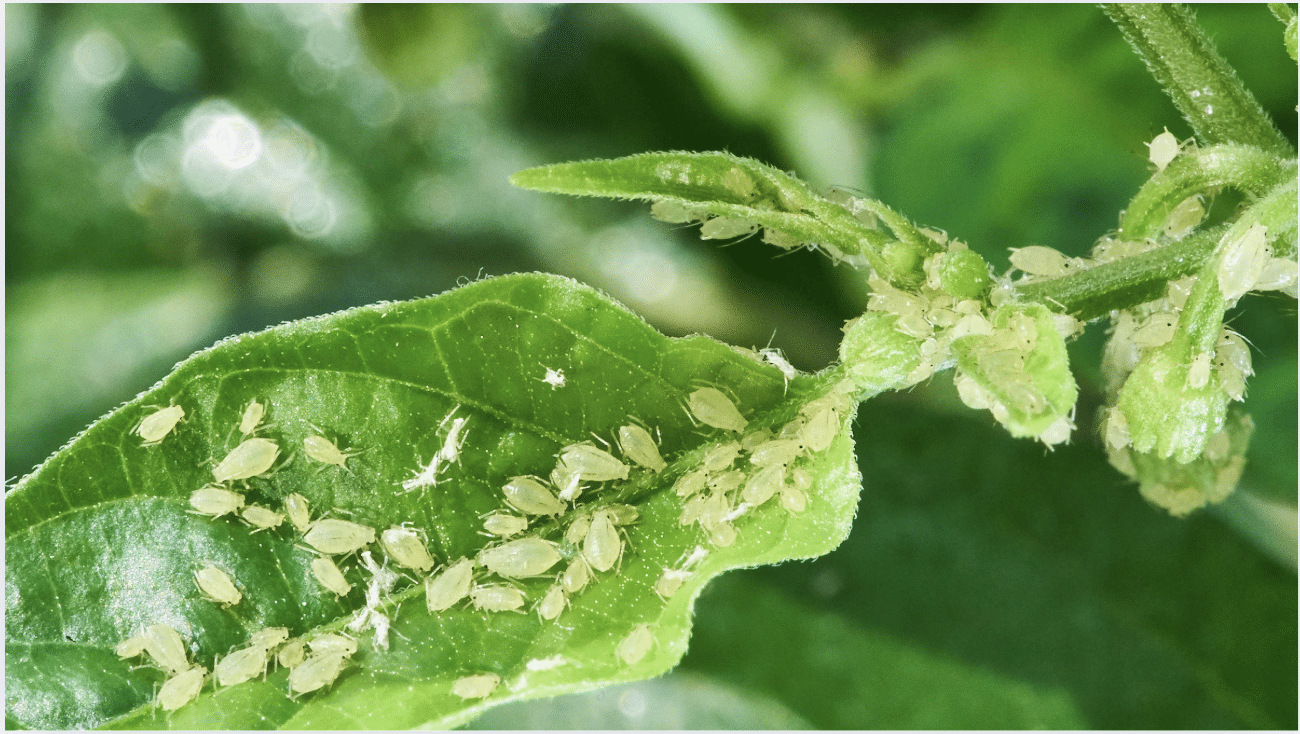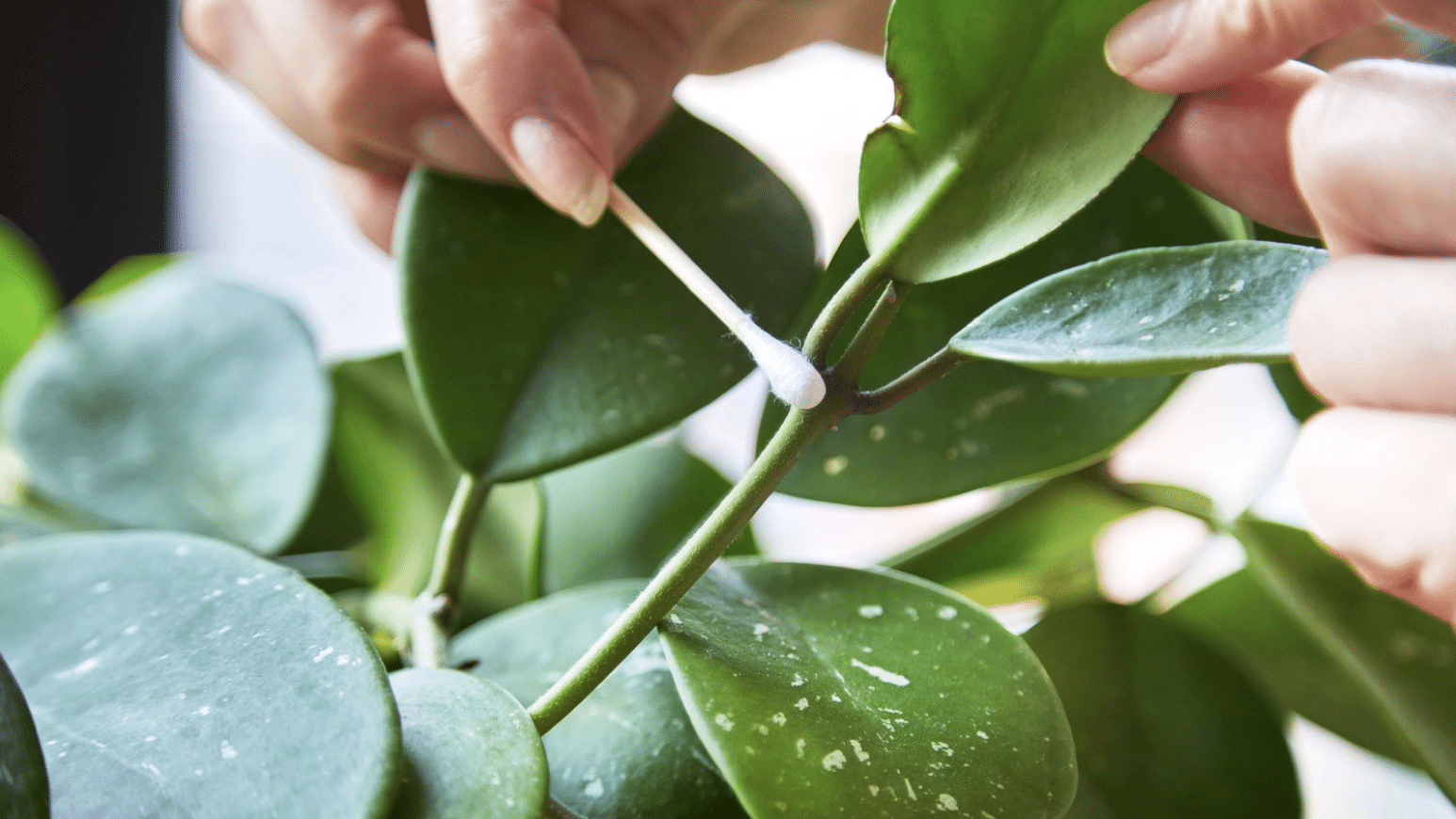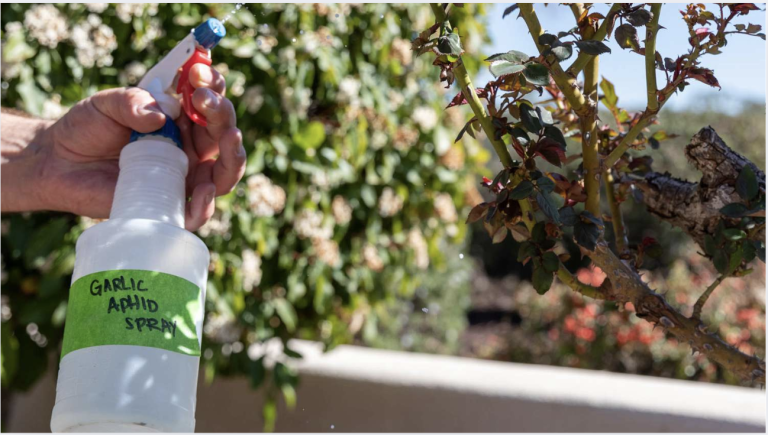I’ve dealt with aphids more times than I can count, and trust me – they’re a real pain.
These tiny bugs love to suck the life out of your plants, leaving them weak, curled, and covered in sticky stuff.
At first, I didn’t even know what was causing the damage. But once I figured it out, I learned a few easy ways to get rid of them without harming my plants or the environment.
No matter if you’re dealing with aphids on flowers, vegetables, or even indoor plants, I’ve got your back.
In this blog, I’ll walk you through how to spot aphids, what works best to get rid of them, and how to keep them from coming back.
What are Aphids and Why are They a Problem?

Aphids are tiny bugs that feed on plants by sucking out their juices. They’re usually green, but they can also be black, white, brown, or even pink.
You’ll often find them in groups on the undersides of leaves, on new plant growth, or near flower buds. Even though they’re small, they can cause big problems in your garden.
When aphids feed, they make leaves curl, turn yellow, or drop off. They also leave behind a sticky substance called honeydew, which can attract ants and cause mold to grow.
Aphids on tomatoes are especially common in spring and early summer. They often gather on the new stems, flower buds, and the undersides of the leaves, where they suck out nutrients and cause wilting.
If left alone, aphids can quickly take over a plant and weaken it. That’s why it’s important to spot them early and take action before the damage gets worse.
Types of Aphids to Know
Aphids come in many colors and tend to prefer certain plants. Knowing which type you’re dealing with can help you treat the problem more effectively.
| Type | Color | Common Host Plants |
|---|---|---|
| Green Aphids | Light green | Roses, tomatoes, peppers |
| Black Aphids | Dark brown to black | Beans, nasturtiums, dahlias |
| White Woolly Aphids | White with fuzzy coating | Apple trees, ash, hawthorn |
| Yellow Aphids | Pale yellow | Milkweed, oleander, houseplants |
| Pink Aphids | Light pink to reddish | Peas, lettuce, and ornamentals |
| Brown Aphids | Tan or brown | Grains, shrubs, and fruit trees |
| Root Aphids | White to light brown | Carrots, beets, radishes (below soil) |
How to Identify Aphid Infestation

Aphids are small, but the damage they cause is easy to spot once you know what to look for.
- Sticky or shiny leaves: If your plant feels sticky or looks like it has a shiny coating, it’s likely from honeydew, a sugary liquid that aphids leave behind. It often shows up on leaves and stems after they feed.
- Curled, yellow, or drooping leaves: Aphids suck the juices from leaves, causing them to curl up, turn yellow, or sag. If the rest of the plant looks healthy, that’s a clue that aphids might be the issue.
- Groups of tiny bugs on stems or leaves: Look closely at new growth or the undersides of leaves. Aphids are tiny – like little moving dots – and they often cluster together in big groups.
- Ants crawling on the plant: Seeing lots of ants on your plant can be a big red flag. Ants love feeding on honeydew and will actually protect aphids in return, making the problem even worse.
- Black, sooty mold on leaves: The sticky honeydew can lead to mold growing on the surface of your plant. If you see black spots that look like soot, you’re likely dealing with an aphid issue.
How to Get Rid of Aphids
You don’t need strong chemicals to fight off aphids. If you’re wondering how to kill aphids without harming your plants or the environment, natural methods are a great place to start.
1. Spray Them Off with Water
One of the quickest and simplest ways to knock aphids off your plants is with water.
I use a regular garden hose with a spray nozzle and aim for the undersides of the leaves, where aphids like to hide. The pressure pushes them off the plant without damaging it.
This method won’t kill every aphid, but it’s great for light infestations or as a first step before using anything else. Just be sure to spray in the morning so the plant can dry before nightfall.
2. Use Neem Oil Spray
Neem oil is one of my go-to natural solutions. It comes from the neem tree and acts like a natural pesticide. It doesn’t kill aphids right away, but it stops them from feeding and laying eggs.
I mix 2 teaspoons of neem oil with a quart of water and a drop of mild dish soap, then spray it on the leaves and stems, top and bottom.
You can repeat every few days until the aphids are gone. It’s safe for most garden plants and won’t harm pollinators when used correctly.
3. Try Insecticidal Soap
Insecticidal soap is a gentle, plant-safe treatment you can find at most garden stores – or make at home. It works by breaking down the soft bodies of aphids and other pests.
Just mix 1 tablespoon of mild liquid soap (like castile soap) with 1 quart of water. Spray it directly on the aphids, making sure to hit all sides of the leaves.
It’s best to apply this in the early morning or late afternoon to avoid leaf burn.
4. Make a Homemade Garlic or Chili Spray
Aphids hate strong smells like garlic and spicy chili. Blend a few garlic cloves or a hot pepper with water, strain it, and spray the liquid on your plants.
You can also add a little dish soap to help it stick. Be careful with chili sprays, though – they can irritate your skin or eyes, so wear gloves.
This method won’t kill aphids instantly, but it can keep them from coming back.
5. Attract or Release Beneficial Insects
Sometimes the best solution is letting nature do the work. Ladybugs, lacewings, and parasitic wasps love to eat aphids.
You can attract them by planting flowers like dill, fennel, and yarrow, or you can buy them from garden suppliers and release them in your yard.
I’ve had great success using ladybugs – they stick around if they have enough food and a safe place to live.
Preventing Aphids from Coming Back
Getting rid of aphids is one thing – keeping them away for good is another. I’ve learned a few simple habits that help keep my plants healthy and make it harder for aphids to return.
1. Keep Your Plants Strong and Healthy
Aphids are drawn to weak or overly soft plant growth, which often results from overwatering or excessive use of nitrogen-rich fertilizers.
To reduce the risk of another infestation, water plants consistently and deeply, but avoid soaking the soil too often. Use a balanced, slow-release fertilizer to promote steady growth.
Strong, healthy plants are much more resistant to pest attacks and can recover faster if one does occur.
2. Inspect Your Plants Often
Routine plant inspections are one of the best defenses against aphids.
Check both indoor and outdoor plants every few days, especially during spring and summer when aphids are most active.
Pay close attention to the undersides of leaves, new buds, and soft stems – these are their favorite spots to hide and feed.
Catching a few aphids early on makes it much easier to control the problem before it spreads.
3. Use Companion Plants that Repel Aphids
Companion planting is a simple, natural way to keep aphids away.
Certain plants, like marigolds, chives, basil, and nasturtiums, produce strong scents that confuse or repel pests. These can be planted around vegetables, herbs, and flowers as a natural barrier.
In addition to repelling aphids, they also attract helpful pollinators and beneficial insects that can keep the garden balanced.
4. Attract Natural Predators
Ladybugs, lacewings, and even tiny parasitic wasps love to eat aphids.
I grow things like dill, fennel, and yarrow to bring them in. The more of these helpful insects you have in your garden, the fewer aphids you’ll see.
Avoid spraying harsh chemicals – they can scare off or kill the good bugs, too.
5. Avoid Bringing Aphids Indoors
When bringing plants indoors from outside or purchasing new ones, always inspect them closely for signs of pests.
Give leaves a gentle rinse and isolate the plant for a few days if possible. This prevents hidden aphids from spreading to other indoor plants.
Clean containers, shelves, and window sills regularly to avoid giving pests a place to hide.
6. Rotate Crops and Clean Up Dead Plants
Dead leaves, stems, and other plant debris can provide hiding spots for aphids and their eggs. Keep the garden tidy by regularly removing fallen plant matter and pruning dead growth.
In vegetable gardens, rotating crops each season can help disrupt pest life cycles, making it harder for aphids to find their preferred plants year after year.
Safe Aphid Removal on Indoor Plants

Indoor plants can get aphids, too, and it’s even trickier since you don’t want to make a mess or harm your space. This is how I safely treat them inside my home:
- Isolate the infected plant: Move the affected plant away from others to prevent the aphids from spreading. Placing it in a separate room or a different corner is usually enough to limit contact.
- Rinse the plant in the sink or shower: Use lukewarm water to gently wash off visible aphids, paying close attention to the undersides of leaves where they often hide. This can remove a large number quickly without using sprays.
- Wipe leaves with soapy water: Mix a few drops of mild dish soap with water, then use a soft cloth or sponge to carefully wipe down the leaves and stems. This helps dislodge and kill aphids while being gentle on the plant.
- Apply neem oil or insecticidal soap: For heavier infestations, use neem oil or an indoor-safe insecticidal soap. Spray it lightly over the plant, especially on new growth and leaf undersides.
- Trim heavily infested parts: If certain leaves or stems are completely covered, remove and discard them. Pruning reduces the aphid population and limits the need for repeated spraying.
- Repeat every few days: Recheck the plant every 2–3 days and repeat the treatment as needed. Aphids reproduce quickly, so consistent care is key to fully removing them.
Conclusion
Aphids can be a real headache, but with the right steps, they’re totally manageable.
By learning how to spot them early, using natural methods, and taking simple steps to keep them away, you can protect your plants without harsh chemicals.
If they ever show up on your veggies, flowers, or houseplants, staying on top of things makes all the difference.
I always remind myself that healthy plants are less likely to attract pests in the first place.
Regular care, a few helpful sprays, and some garden-friendly bugs can go a long way.
With a little patience and attention, you’ll get your garden or indoor space back in shape – and keep it that way. The key is to act early and stay consistent.













